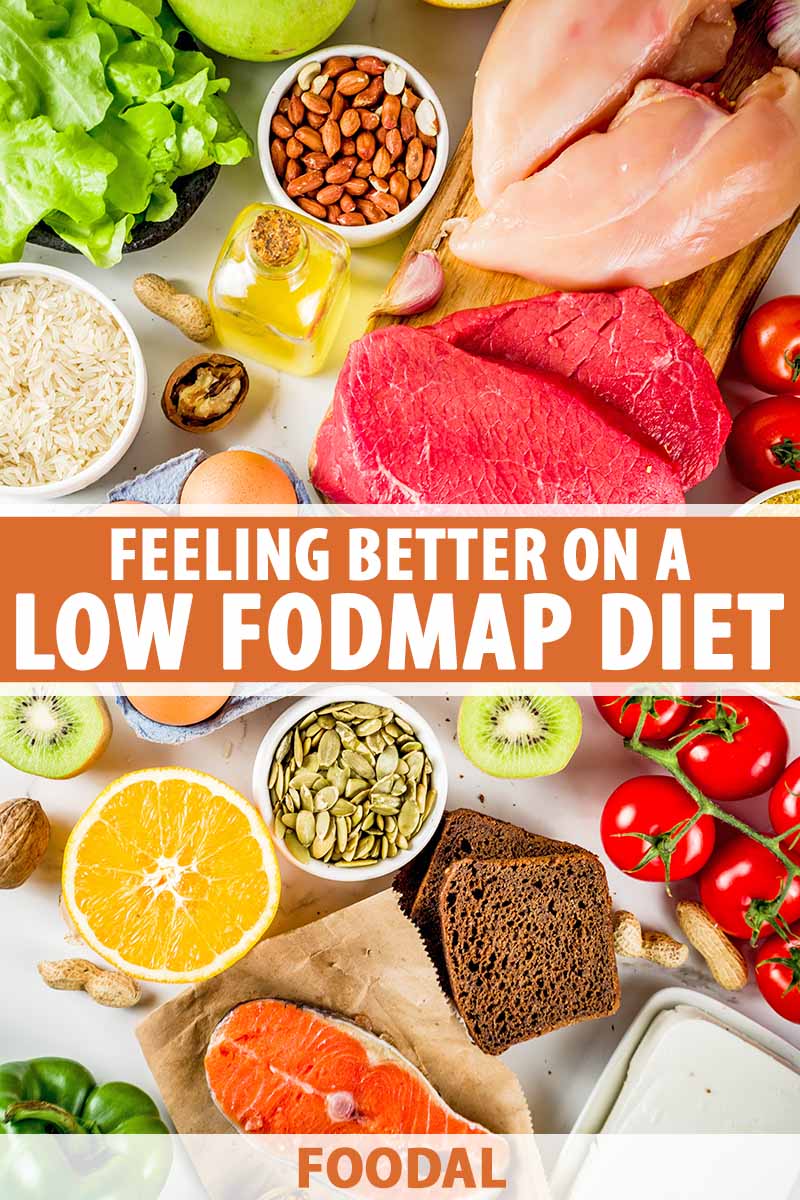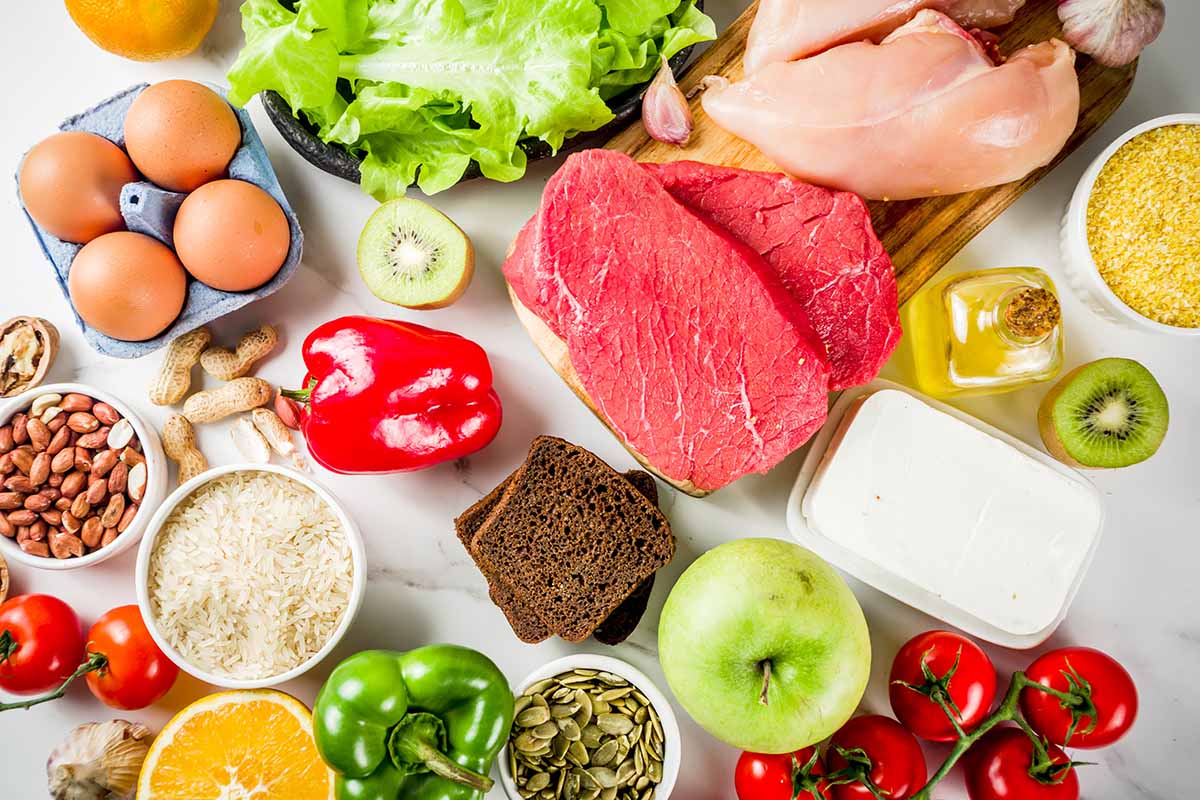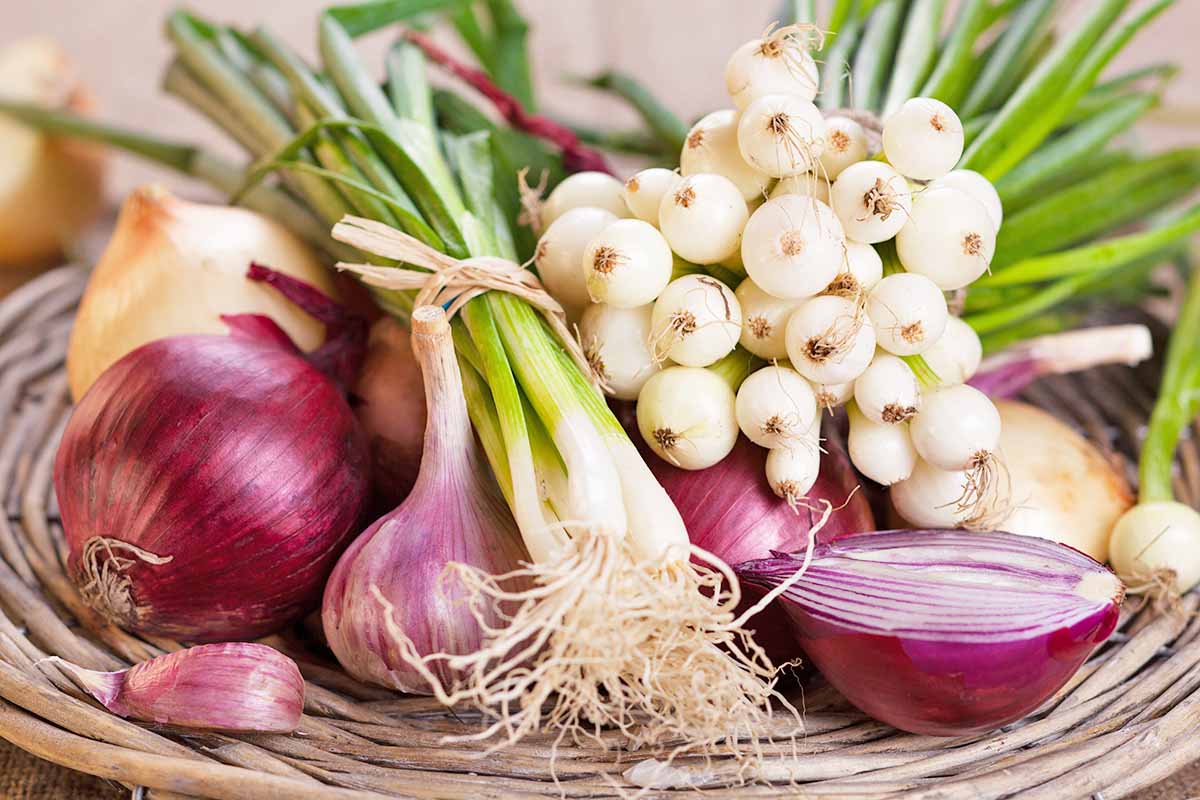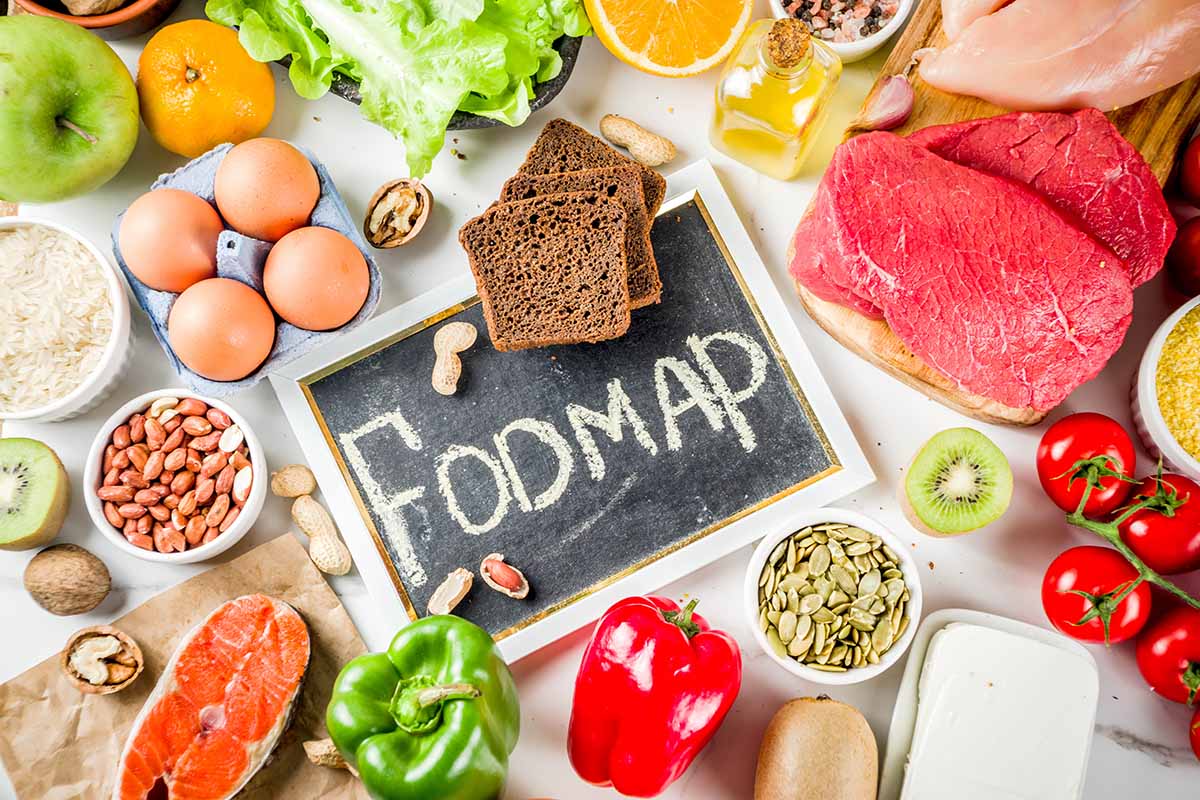Have you started turning down dinner invitations because you’re afraid something you’ll eat won’t “agree” with you?
Are you juggling laxatives and antidiarrheal meds? Never sure what kind of a day it’s going to be?
You’re not alone, and you’re not crazy. You may have irritable bowel syndrome or IBS.

We link to vendors to help you find relevant products. If you buy from one of our links, we may earn a commission.
IBS is a chronic condition of the lower GI tract that is classified as a functional gastrointestinal disorder (FGID) because it is not infectious, metabolic, or structural – it’s something else.
Symptoms may include abdominal pain, bloating (a full feeling), distension (belly swelling), gas, diarrhea, or constipation on an ongoing basis.
This article discusses an elimination diet called “low FODMAP” to alleviate abdominal distress associated with IBS. I can tell you firsthand it can help!
Here’s what we’ll cover:
What You’ll Learn
Let’s delve into this uncomfortable issue.
I’d Rather Not Talk About It
Most of us have GI discomfort at one time or another. And we go quietly about our business, hoping no one will notice.

However, for those with IBS, managing symptoms becomes a way of life that disrupts work and social interactions, often causing sufferers to experience feelings of low self-esteem in addition to physical discomfort.
While there’s still no specific test to diagnose IBS, there’s never been a better time to discuss your symptoms with a gastroenterologist and/or a registered dietitian.
Managing symptoms by reducing your intake of difficult to digest short-chain carbs is a treatment method with proven success.
The Low FODMAP Diet
Australian dietician Sue Shepherd, PhD, created the Low FODMAP Diet in 1999.
Shepherd directs Shepherd Works, a dietary practice in Australia.

Shepherd co-authored her first book on the subject with Monash researcher Dr. Peter Gibson, followed by a published update and a two-step approach to the regimen.
There is also an app that was developed by the researchers at Monash to aid in shopping for appropriate foods that is updated as new information becomes available.
A diet low in short-chain carbs may answer the prayers of many IBS sufferers.
Let me tell you about my experience.
My Story
I have celiac disease, lactose intolerance, and IBS.
Yup. And I thought it couldn’t get any worse. But about three years ago, it did!
Long story short, I had two new problems:

First, I had an overgrowth of bacteria in my small intestine called SIBO, a controversial diagnosis with an even more controversial treatment.
I took antibiotics for two weeks to rid my small bowel of “bad” bacteria and then probiotics to return my gut flora to normal.
Second, I tested positive for fructose malabsorption. I was referred to a dietician and instructed to follow a paleo, low short-chain carb protocol.
For how long? That was unclear and would depend on my ability to tolerate foods after restricting them for a trial period.
Knowing what was wrong was a relief, but it was challenging to limit my food options further.
My paleo program included lean meats, fish, fruits, vegetables, nuts, and seeds. That addressed my two main issues: needing to eat gluten-free and lactose-free foods.
The low FODMAP portion would address my inability to digest fructose.
Since then, I have followed advice to use caution when consuming short-chain carbs.
Let me tell you about them.
Understanding FODMAPs
Short-chain carbohydrates or FODMAPs do not digest well, especially in people with IBS. Instead of absorbing into the bowel, they ferment, bacteria consume them, and GI irritability ensues.
FODMAP is an acronym that stands for:
- Fermentables
- Oligosaccharides
- Disaccharides
- Monosaccharides
- And
- Polyols
It’s quite a mouthful. But basically, saccharides are sugars, and polyols are sugar alcohols. The ones that are hard to digest are the ones that ferment in the bowel.
Let’s examine each.
Fermentables
We know FODMAPs are short-chain carbohydrates that contain sugar molecules that are hard for IBS sufferers to digest.
When we eat them, these carbs don’t get absorbed in the small intestine as they should. Instead, they end up in the large intestine, where they become food for bacteria.
Fermentation is the process by which bacteria break down the sugars, resulting in gas, bloating, and IBS discomfort.
Oligosaccharides
“Oligo” means several, and oligosaccharides are short chains of several sugar molecules.
The ones that are difficult to digest include fructans and galacto-oligosaccharides (GOS). While no one can digest fructans or GOS, their consumption is particularly uncomfortable for those with IBS.

Fructans come primarily from wheat, onions, and garlic. Some people with gastric irritability may tolerate oil infused with garlic and the tops of green spring onions.
Additional sources of fructans are inulin and fructo-oligosaccharides (FOS), foods like dairy products, prebiotics, and gluten-free selections. Inulin often appears on package labels as chicory root.
Galacto-oligosaccharides come from legumes and their dried seeds (pulses), including foods like kidney beans and chickpeas. Soaking beans or consuming canned products may improve tolerance for some with IBS.
Disaccharides
“Di” means two, and disaccharides are two joined sugars.
The one that causes IBS distress is lactose, found in milk, soft cheeses, and yogurt. Some GI patients tolerate aged cheeses and butter.
Monosaccharides
Monosaccharides are single sugars; “mono” means one.
The culprit here is fructose, mainly in fruits and honey. It’s also the main ingredient in high-fructose corn syrup, a corn sweetener used frequently in processed foods.
Fructose often occurs naturally with glucose. In foods where this is the case, the ratio of fructose to glucose is the key to the likelihood of successful digestion. Absorption will be poor for IBS sufferers if there is a higher ratio of fructose.
Apples are the fruit with the most significant fructose content.
Polyols
Polyols are sugar alcohols found in some fruits and vegetables and artificially-sweetened processed foods.
They appear on package labels with names like xylitol, isomalt, polydextrose, maltitol, mannitol, and sorbitol.
From Understanding to Implementation
By understanding the effects of short-chain carbs on people with IBS and studying which foods are high in fermentable sugars, researchers have given gastroenterologists and dieticians a natural treatment plan for their patients.
This chart from Monash University shows what foods are safe and which ones to avoid or consume in moderation.
An excellent reference book for understanding and implementing a diet low in short-chain carbs is “The Complete Low-FODMAP Diet: A Revolutionary Plan for Managing IBS and Other Digestive Disorders,” by Sue Shepherd, PhD, and Peter Gibson, MD.
This book is currently available to purchase via Amazon.

A second book picks up where the first leaves off: “The Low-FODMAP Diet Cookbook: 150 Simple, Flavorful, Gut-Friendly Recipes to Ease the Symptoms of IBS, Celiac Disease, Crohn’s Disease, Ulcerative Colitis, and Other Digestive Disorders” by Sue Shepherd, PhD presents more low-FODMAP recipes formulated specifically for IBS sufferers.
This is also available to purchase via Amazon.

And “The 2-Step Low-FODMAP Eating Plan: How To Build a Custom Diet that Relieves the Symptoms of IBS, Lactose Intolerance, and Gluten Sensitivity” by Sue Shepherd, PhD demonstrates how to restrict short-chain carbs and then reintroduce them gradually to achieve a custom eating plan for good health and greater digestive comfort.

The 2-Step Low-FODMAP Eating Plan
In addition, Monash University offers a Low FODMAP app to purchase for iPhone or Android. It contains the Monash University 3-Step Diet Guide with High FODMAP Foods and Low FODMAP Alternatives.
The app offers a three-step program:
- Step 1: Low FODMAP Diet, 2-6 weeks
- Step 2: Reintroduction, 8-12 weeks
- Step 3: Personalization, a long-term plan based on your personal tolerances
It’s the perfect shopping tool. Learn the high, medium, and low short-chain carb content of grocery items as you browse the aisles and get the most up-to-date food lists.
Where to Begin
Where should you start on the path to healthy digestion?
First, address your tolerance of grains.
Gluten-free cooking may be the first challenge if you test positive for celiac disease, gluten intolerance, or wheat allergy.
The good news is that gluten-free foods have come a long way since I started eating them. From cookies and muffins to pasta and pizza crust there’s no need to feel deprived with today’s moist and flaky treats.
Similarly, you can address lactose intolerance by taking an over-the-counter lactase enzyme at mealtimes or eliminating milk (cow, sheep, and goat), soft cheeses, and yogurt.
Many non-dairy alternatives are available commercially, or you can make your own. To start, try your hand at homemade dairy-free yogurt and homemade almond milk!
Healthy food manufacturers frequently roll out new products suited to intolerances and allergies.
One such manufacturer is the FODY, a low FODMAP food company whose products are all tested and certified by Monash University. Their gluten- and lactose-free Low FODMAP Blueberry Almond Snack Bars are a delicious option to satisfy cravings for an afternoon pick-me-up, and they’re available on Amazon.

FODY’S Low FODMAP Blueberry Almond Snack Bars
Please note that these bars contain soy, and some diet experts recommend avoiding it.
After addressing gluten and lactose, the most difficult foods for many to limit are onions and garlic. These are essential ingredients in a preponderance of recipes. Unfortunately, they’re full of fructans, a known cause of bowel irritability.
However, with generally well-tolerated spring onion tops and garlic-infused oil, you may be able to replicate your favorite flavors.
In addition to snack bars, FODY offers various products without onions and garlic, including condiments, pasta sauces, salsa, and seasonings. I personally love serving the brand’s mild salsa at parties! They are currently available now on Amazon.

FODY Low FODMAP Mild Salsa, 3-pack
And because herbs and seasonings do not contain short-chain carbs, you can make liberal use of flavor enhancers like parsley, rosemary, thyme, and ginger, a superfood with antioxidant benefits.
Please note that not all superfoods are low in fermentable sugars.
And so it goes.
The low FODMAP plan requires limiting or eliminating foods on the list to determine which ones cause the most bowel irritability.
As the gut heals, foods are reintroduced and may be well-tolerated.
Dieticians who administer this regimen follow their patients closely to aid them in reintroducing as many foods as possible. The length of time varies from person to person.
A Multifaceted Challenge
Over the years, many IBS sufferers in my family were diagnosed with “nervous stomachs.” To some degree, this may be true.

Although no one can fully digest fructans or galacto-oligosaccharides, not everyone experiences pain, bloating, and misery.
Why is that?
The answer is that the bowel is said to have a “gut brain” that communicates with the brain in our heads through the nervous system. Those of us who feel bowel discomfort have nerves that are extremely sensitive to this communication.
Therefore, while stress may contribute to IBS, an overactive nervous system of a genetic nature may be at the root of it.
Cheryl Harris, MPH, RD of Harris Whole Health in Fairfax, Virginia, employs the low FODMAP treatment plan in the care of her GI patients.
Harris says, “Because so many of the foods restricted on a low FODMAP diet are both tasty and nutritious, the goal is to reincorporate as many foods as possible. And ideally, I want to see clients eating as varied and nutritious a diet as they can tolerate without symptoms.”
A Meal Plan for the Whole Family
Eating various healthy foods is the best way to nourish our bodies. But when healthy foods make us sick, we have no choice but to eliminate or reduce them.

Fixing meals for the whole family can become a challenge.
Should you fix one meal for everyone else and a low FODMAP meal for yourself? Or should you fix one meal low in fermentable sugars for all?
Harris responds, “I would not recommend a low FODMAP diet for the whole family. It isn’t a healthier diet per se; it’s a diet for symptom management.”
For those who still struggle with symptoms after the low FODMAP trial, Harris says, “I always encourage them to circle back with their gastroenterologist for other options.”
Irritable bowel syndrome may have many components, including genetic makeup, food hypersensitivity, history of infection, and ability to cope with stress. In addition, there may be undiagnosed underlying conditions.
Get Your Life Back on Track
Are you tired of suffering and missing out on good times because of the unpredictability and discomfort of IBS symptoms?
The elimination and reintroduction of short-chain carbs may help you understand underlying causes of GI discomfort and how to adjust your diet to suit your intolerances.
If you want to explore how fermentable sugars affect you, schedule an appointment with your family physician or a gastroenterologist. Consider participating in a clinical trial to further scientists’ efforts to document IBS treatments and their effectiveness.

Are you suffering from IBS symptoms? Have you tried the Low FODMAP Diet? We invite you to share your experiences in the comments section below.
If you found this article helpful, we recommend the following guides to good health:
- 17 Signs That You May Be Zinc Deficient
- Beyond Carrots: Foods for Good Eye Health
- Go With Your Gut for Health and Happiness! Top Tips for a Healthy Gut Microbiome
© Ask the Experts, LLC. ALL RIGHTS RESERVED. See our TOS for more details. Originally published September 28th, 2017. Last updated December 2, 2023. Uncredited photos: Shutterstock. Product photos via Amazon.
The staff at Foodal are not medical professionals and this article should not be construed as medical advice. Foodal and Ask the Experts, LLC assume no liability for the use or misuse of the material presented above. Always consult with a medical professional before changing your diet, or using supplements or manufactured or natural medications.
About Nan Schiller
Nan Schiller is a writer from southeastern Pennsylvania. When she’s not in the garden, she’s in the kitchen preparing imaginative gluten- and dairy-free meals. With a background in business, writing, editing, and photography, Nan writes humorous and informative articles on gardening, food, parenting, and real estate topics. Having celiac disease has only served to inspire her to continue to explore creative ways to provide her family with nutritious locally-sourced food.



